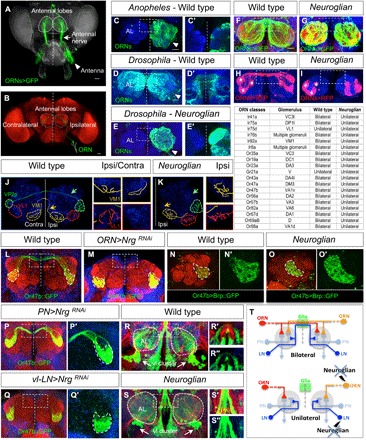Fig. 1. Neuroglian is required in bilateral sensory map formation.

(A and B) Adult olfactory system of Drosophila. (A) Sensory neurons from the antenna (white arrowhead) project via the antennal nerves (white arrow) to the bilateral antennal lobes (ALs; dashed circles). (B) Schematic of a single ORN connecting to a synaptic glomerulus at the ipsilateral AL and a homotopic glomerulus in the contralateral hemisphere (neuropil marker N-cadherin in red). Scale bars, 100 (A) and 50 μm (B). (C to E) Unilateral and bilateral olfactory map organizations in Diptera. Unilateral antennal backfill revealed a strict ipsilateral representation of ORN afferents in mosquitoes (C). In contrast, in higher Brachyceran like Drosophila (D), most ORNs project in a bilateral fashion, as indicated by a large commissural tract and labeling of the contralateral AL. In contrast to wild type, Drosophila carrying a mutation in the cell adhesion molecule Nrg displays a strict unilateral afferent innervation (E). (F to I) Labeling of different bilateral ORN populations in Drosophila wild type (F and H) and nrg mutants (G and I) identified not only the complete absence of the antennal commissure (F and G) but also the precise ipsilateral targeting and class-specific ORN axon convergence [asterisks in (H) and (I)]. (J and K) nrg mutants show a specific loss of bilateral ORN connectivity. (J) Wild type projections from a single olfactory sensillum (ac1) containing two bilateral (Ir92a and Ir31, yellow and green, respectively; arrows indicate contralateral projections) and one unilateral (Ir75d, red) ORN classes. Note the higher degree of synaptic arborization within the ipsilateral glomerulus (left insets) compared to the contralateral target side (right insets). (K) In nrg mutant, bilateral ORN axons show a normal level of ipsilateral arborization but fail to extend any contralateral process (yellow/green arrows, contralateral AL not shown). No changes in the connectivity of the unilateral ORN class can be detected. The table summarizes a systematic analysis of 19 ORN classes in nrg mutants, showing a complete switch of all bilateral into unilateral ORNs but no effect on unilateral ORN classes (100%; n ≥ 8 for wild type and nrg mutant). (L and M) The targeted Nrg RNAi in projecting ORNs (n = 16) uncovers a cell-autonomous function in sensory neurons visualized by the unilateral connectivity (Or47b, green). (N and O) Compared to wild type (N and N′), loss of Nrg (O, O′) has no effect on the presynaptic differentiation at the ipsilateral target side as indicated by the localization of Bruchpilot (Brp) protein. Green, Brp::GFP; red, neuropil marker N-cadherin. (P and Q) Targeted RNAi of Nrg in different cell types of the developing olfactory system. Removal of Nrg from PNs (n = 10) does not influence bilateral ORN (green) connectivity (P and P′). In contrast, loss of Nrg in a cluster of ventro-lateral interneurons (vl-LNs) (n = 8) leads to a complete switch into unilateral ORN circuitry (Q and Q′). (R and S) In the adult olfactory system, a vl cluster (white arrows) of LNs displays, in addition to a broad ipsilateral arborization within the AL, a distinct commissural projection (inset R′ and R″). In nrg mutant, ipsilateral dendritic arborizations seem unaffected, whereas the contralateral LN tract is missing (inset S′ and S″). Green, LNs; red, all neurons labeled by anti-Nrg; blue, neuropil marker N-cadherin. (T) Schematics illustrating sensory map connectivity in the Drosophila olfactory system. Within each pair of homotopic glomeruli, bilateral sensory input (red and orange ORNs) onto unilateral PNs is modified by different classes of bilateral LNs. Loss of Nrg in bilateral ORNs and LNs (but not PNs or midline glial cells) leads to a switch of the bilateral into a unilateral sensory representation. Dashed vertical white lines indicate the midline, commissure position is highlighted by white rectangles, and dotted circles show glomerulus boundaries. Scale bars, 20 μm for all images of adult ALs.
